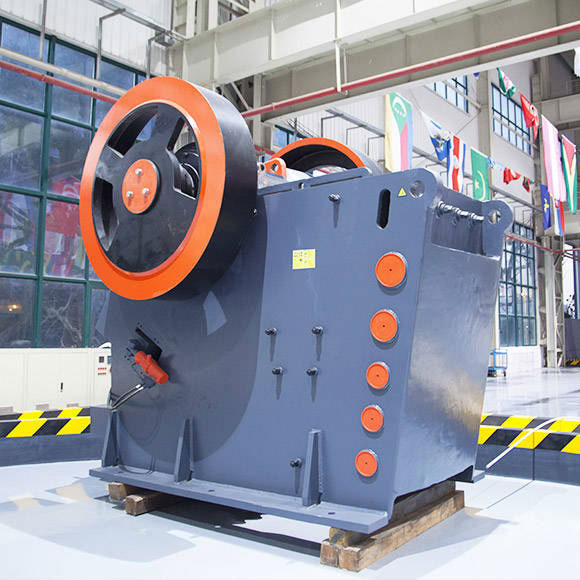A jaw crusher is a type of primary crusher used in crushing applications, particularly for the mining and construction industries. It is one of the main types of crushers that reduce the size of large rocks or ore by breaking them into smaller pieces. When it comes to crushing limestone, jaw crushers are commonly employed due to their efficiency and versatility. Let’s explore the key aspects of a jaw crusher for crushing limestone in detail.
Basic Structure of jaw crusher:
A typical jaw crusher consists of a fixed jaw and a movable jaw. The movable jaw is pivoted at the top, and the opening at the bottom allows for the material to be crushed. The crushing chamber is formed between the two jaws.

Working Principle of jaw crusher:
The operation of a jaw crusher involves a cyclical movement of the movable jaw against the fixed jaw. The rock or ore is fed into the crushing chamber, and the movable jaw exerts pressure on it, breaking it into smaller pieces. The crushed material exits the crushing chamber through a discharge opening at the bottom.
Feed Size and Output Size of jaw crusher:
Jaw crushers are designed to handle various types of materials, and their performance is influenced by factors such as the feed size and the desired output size. In the case of crushing limestone, the initial feed size and the required final product size play crucial roles in determining the appropriate jaw crusher for the job.
Crushing Process for Limestone
Limestone is a relatively soft and brittle material, so jaw crushers can effectively break it down. The process involves the following steps:
- Limestone is fed into the jaw crusher from the top and gradually reduced in size as it moves down the crushing chamber.
- The crusher applies compressive force to break the limestone into smaller pieces.
- The crushed material is discharged at the bottom.
Advantages of jaw crusher:
- Efficiency: Jaw crushers are known for their high efficiency in crushing hard and abrasive materials.
- Versatility: They can handle a wide range of materials, making them suitable for various applications.
- Simple Maintenance: Jaw crushers generally have a simple structure, making maintenance and repairs relatively straightforward.
Considerations of jaw crusher:
- Abrasion Resistance: Limestone may contain abrasive components, so the jaw crusher’s wear resistance is an important consideration.
- Capacity: Depending on the production requirements, the capacity of the jaw crusher should match the demand.
Safety Measures of jaw crusher:
Safety is paramount in any crushing operation. Proper training, equipment guards, and following safety protocols are essential for the well-being of the operators.
Jaw crushers are valuable tools in the mining and construction industries, especially when it comes to crushing limestone. Their robust construction, efficiency, and versatility make them well-suited for handling various materials, including the relatively soft and brittle nature of limestone. However, proper consideration of factors like feed size, output size, and wear resistance is crucial for optimal performance and longevity. Regular maintenance and adherence to safety measures contribute to a successful and safe crushing operation.
